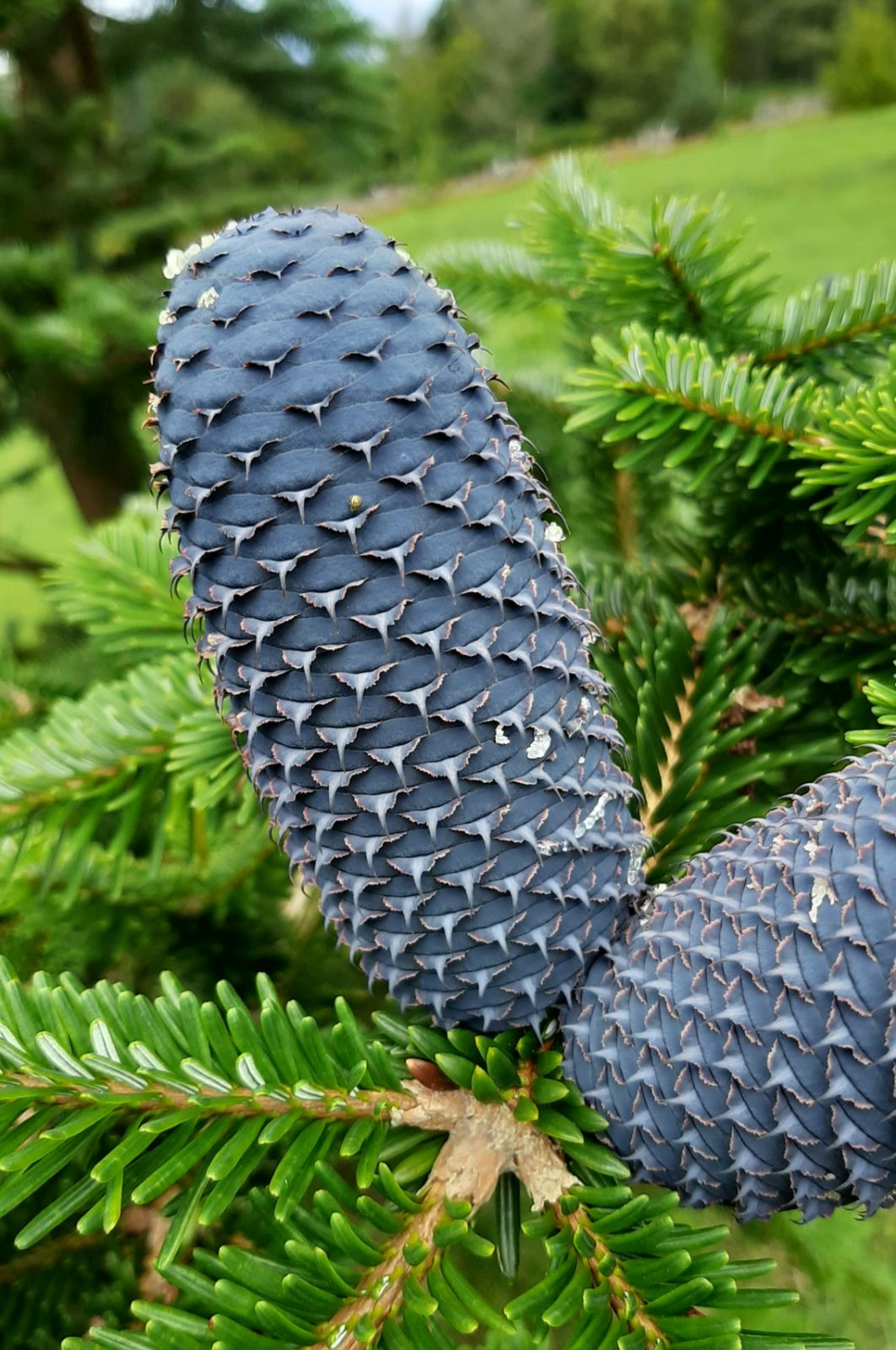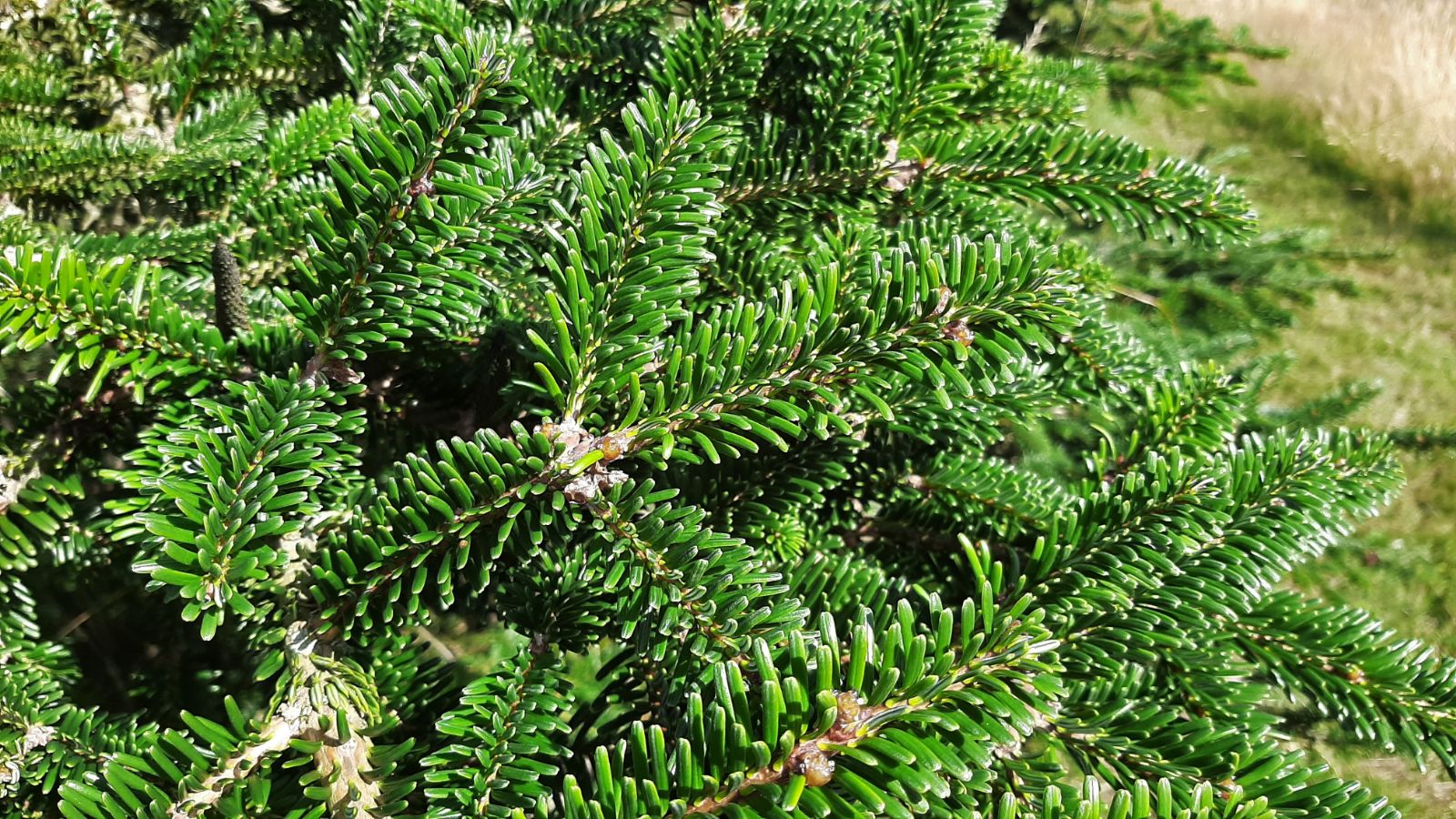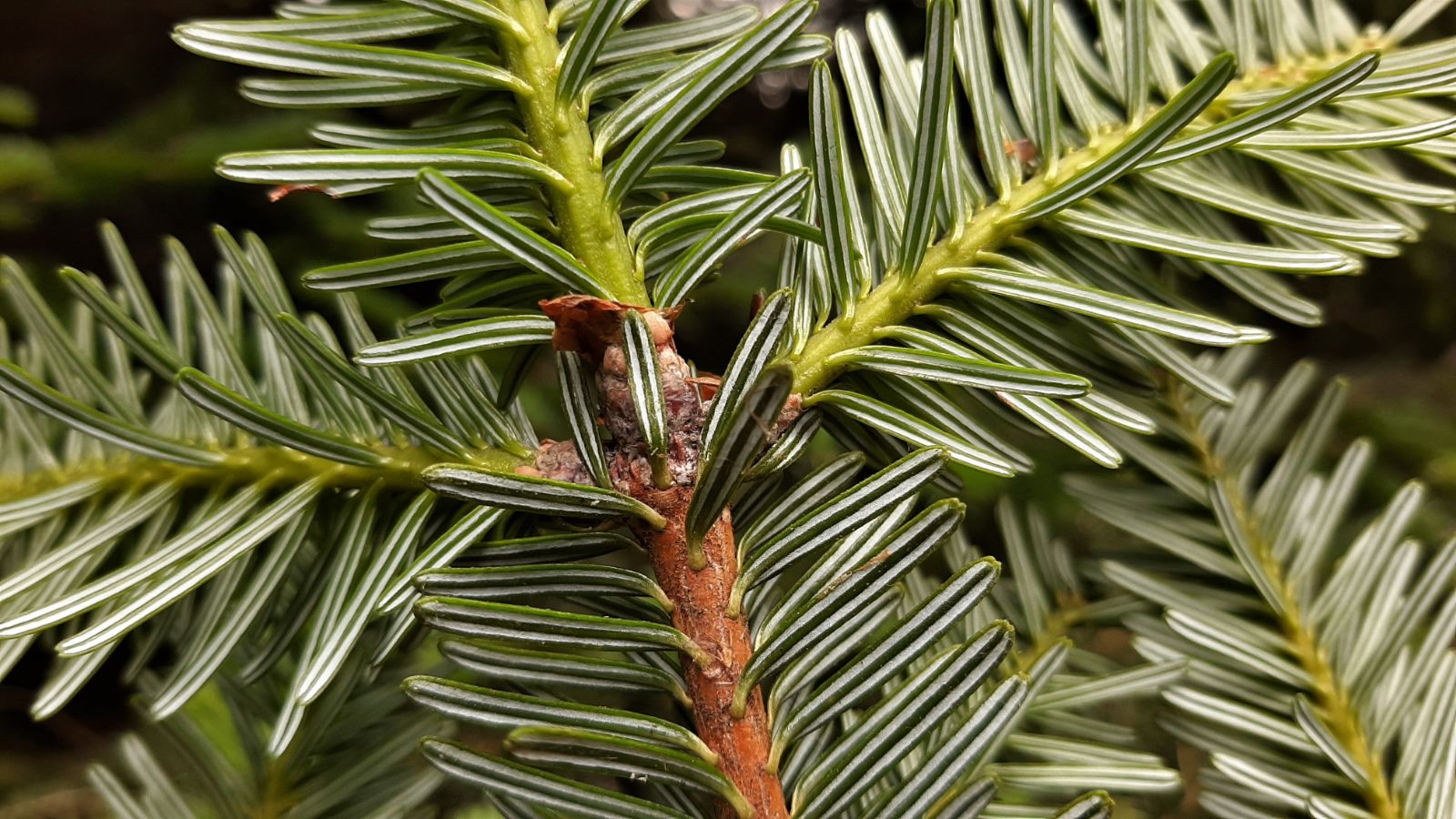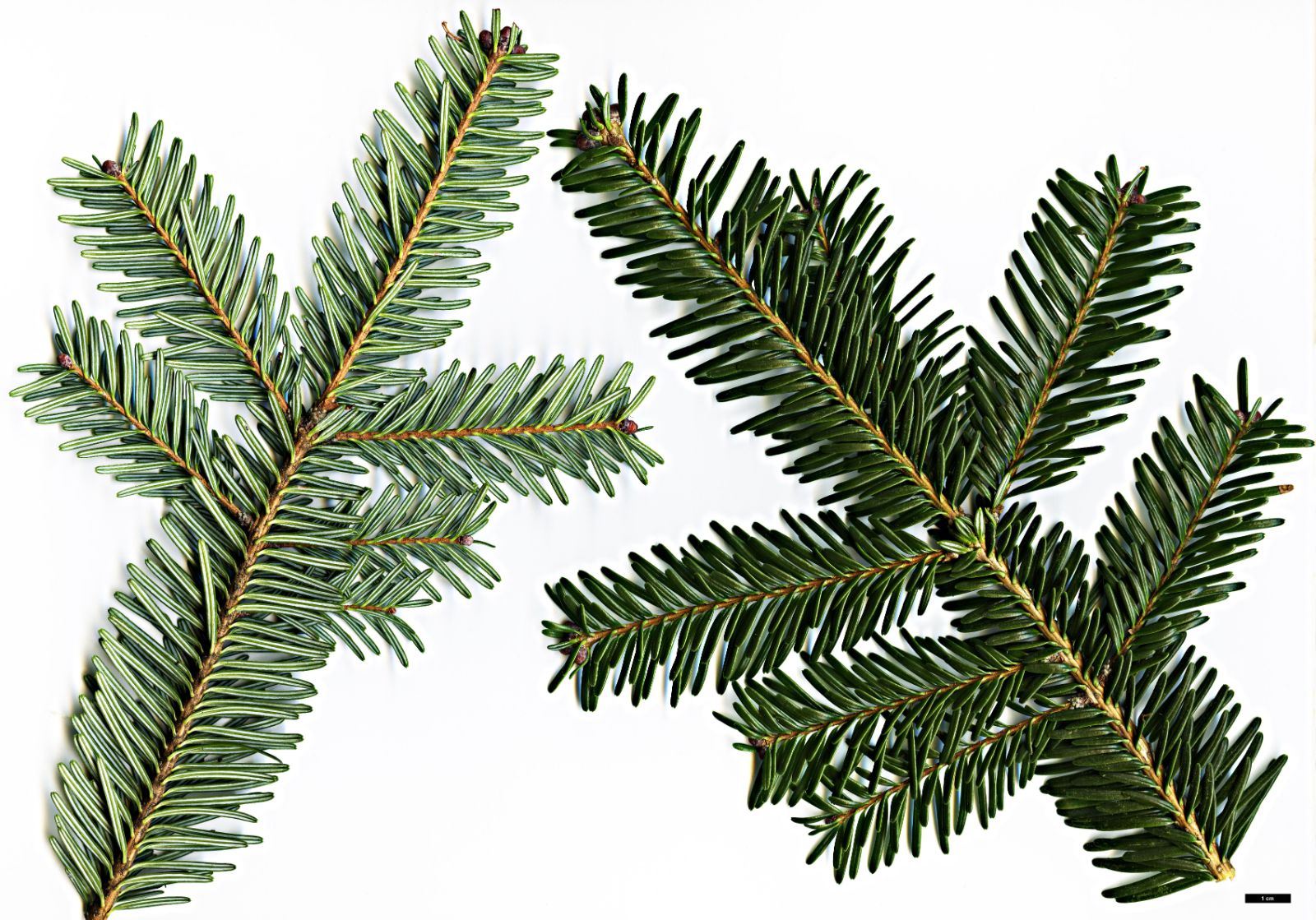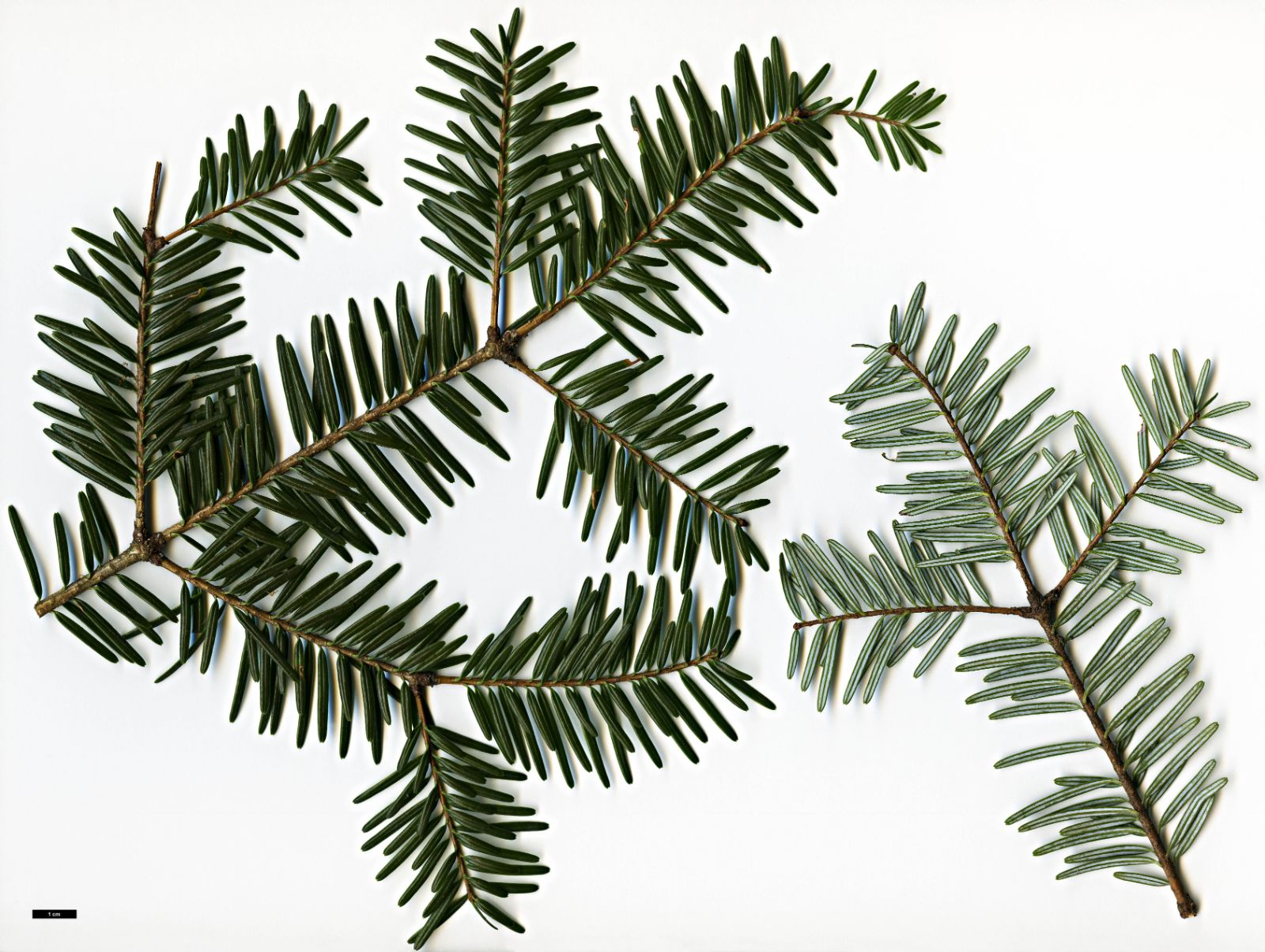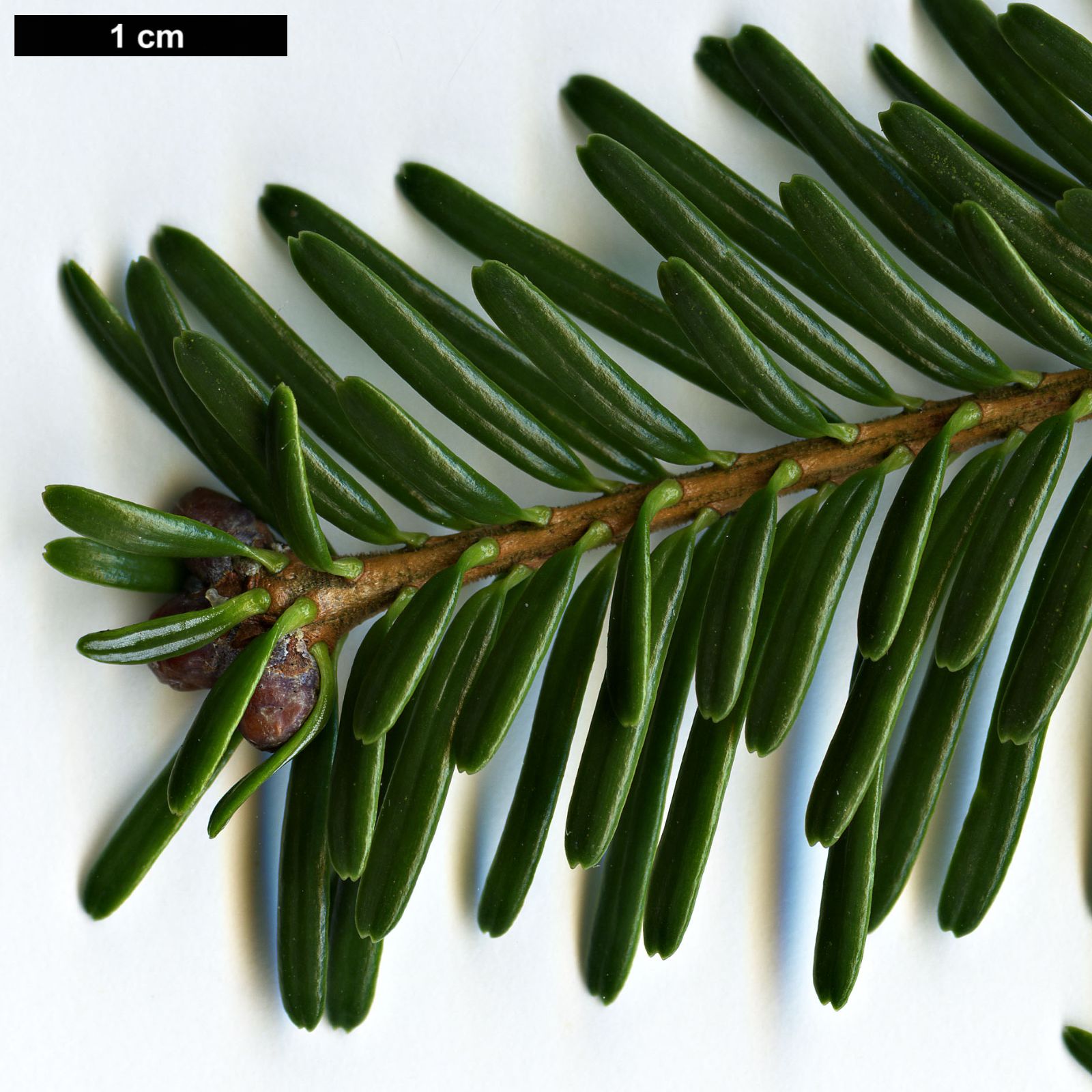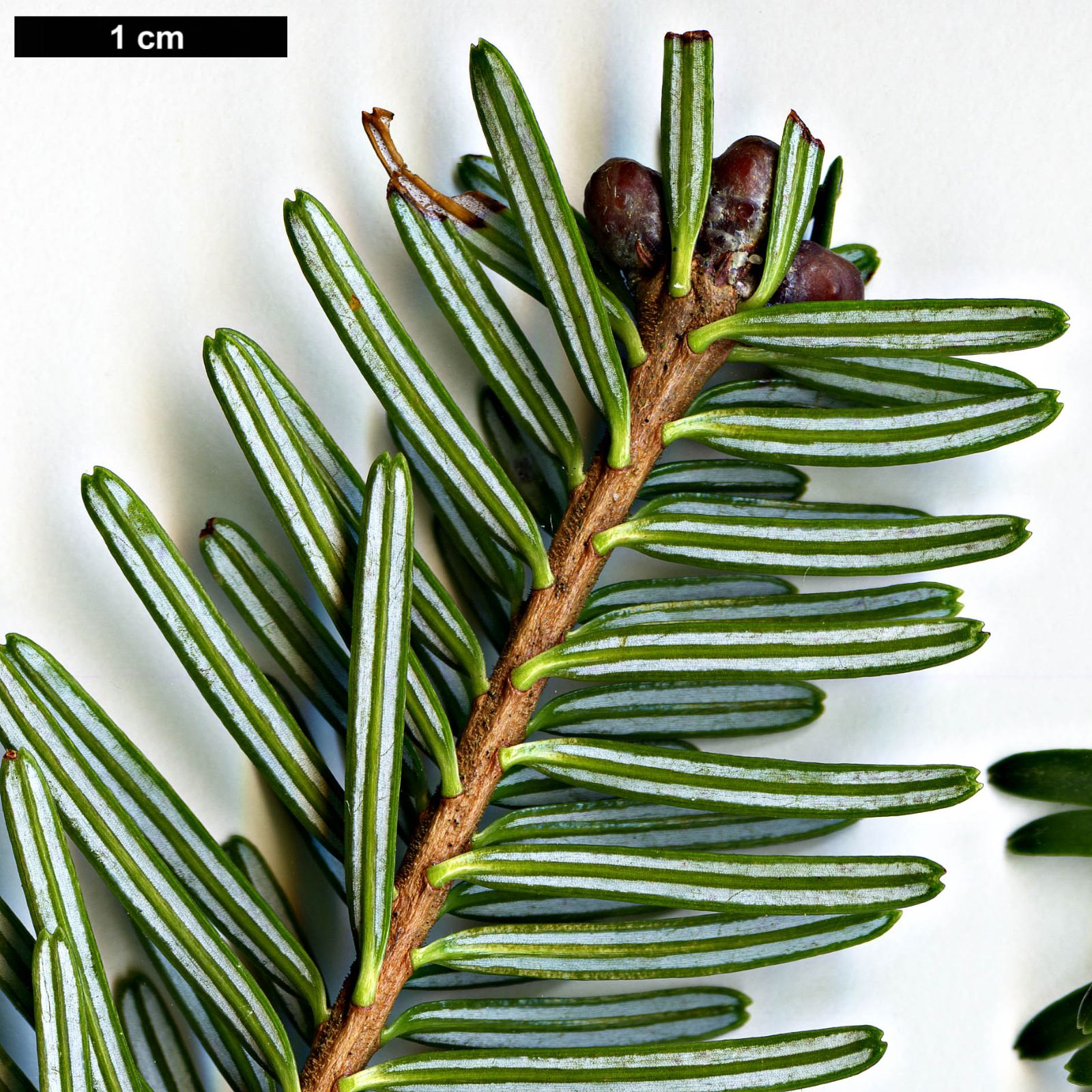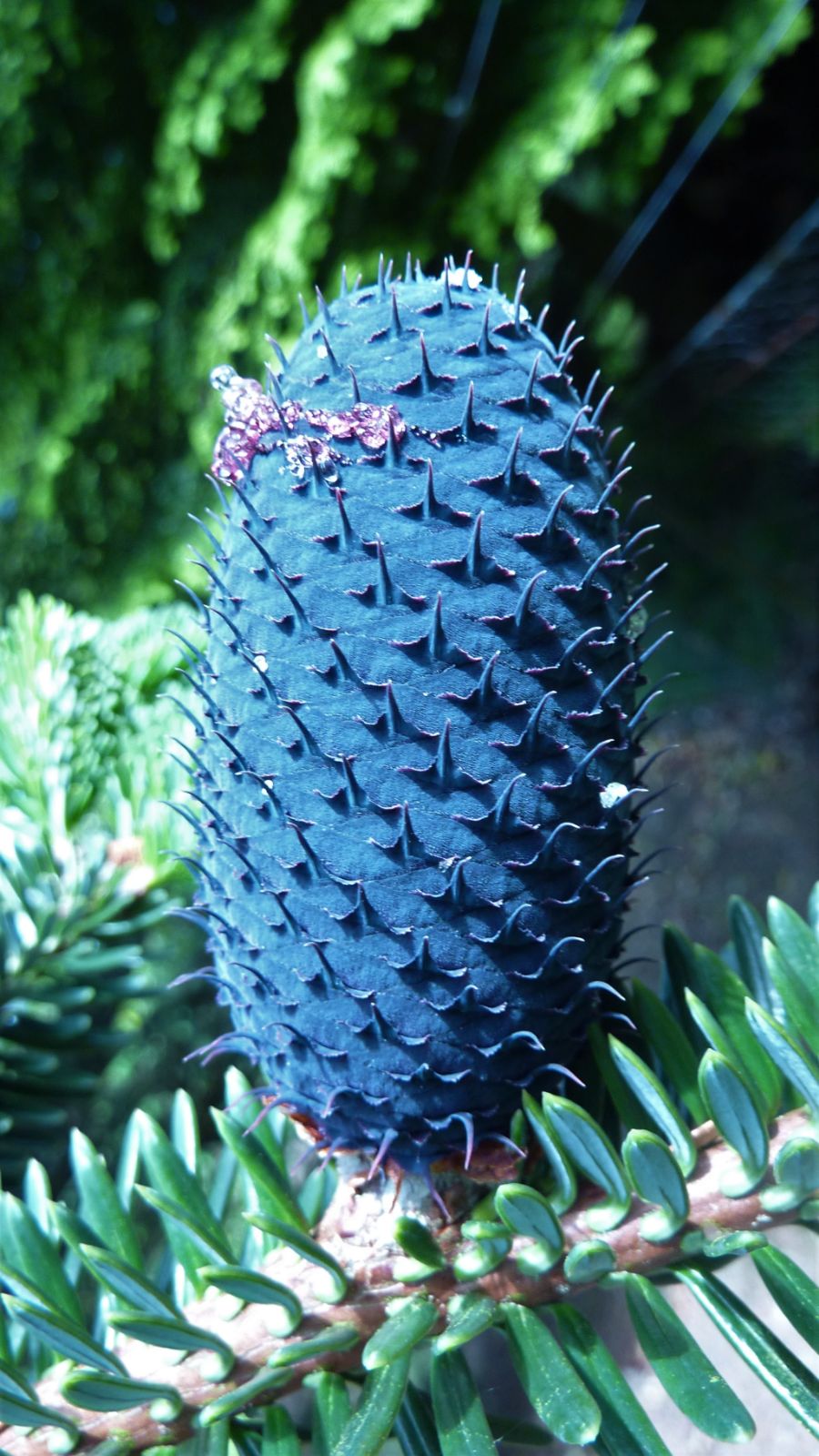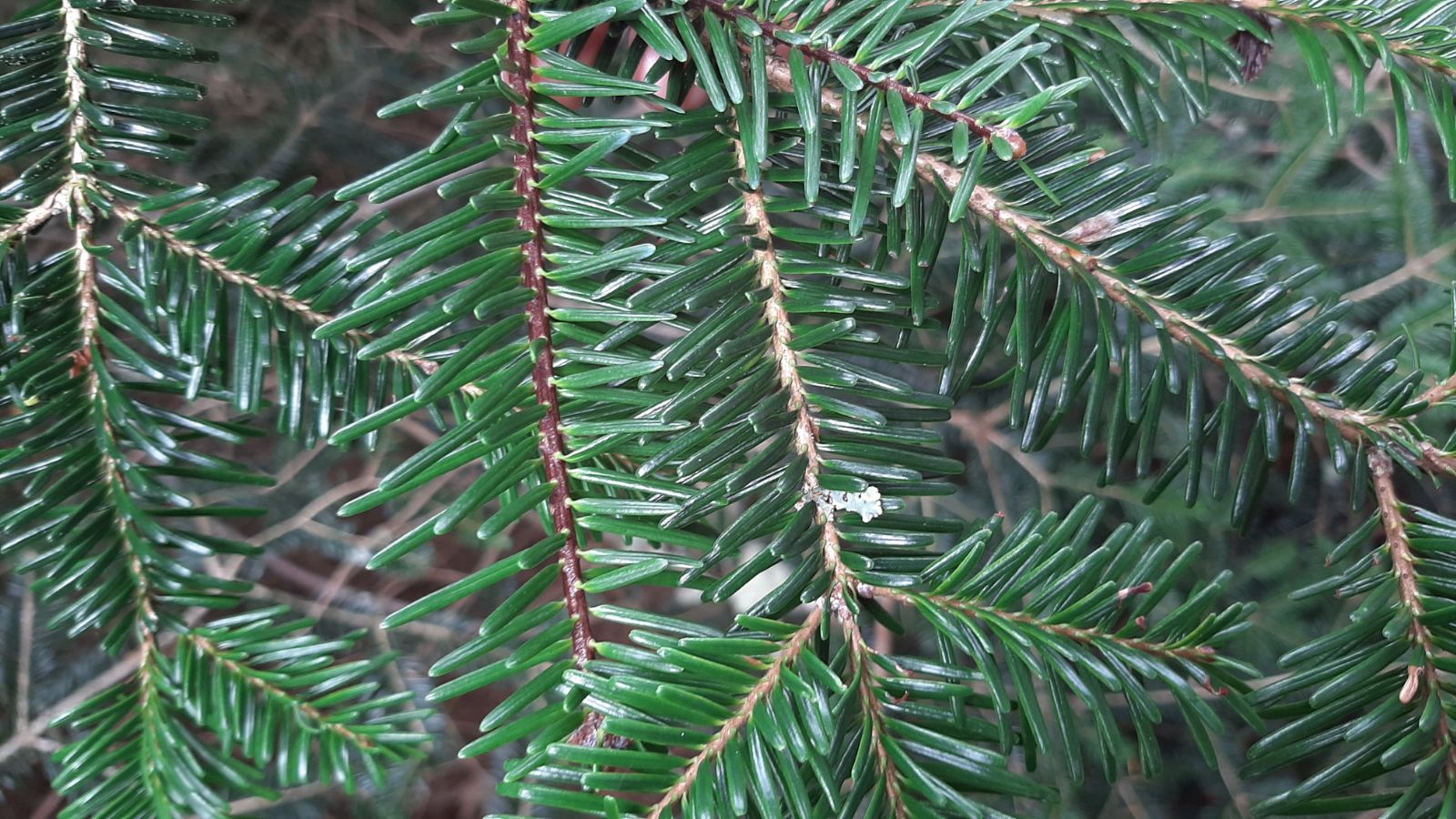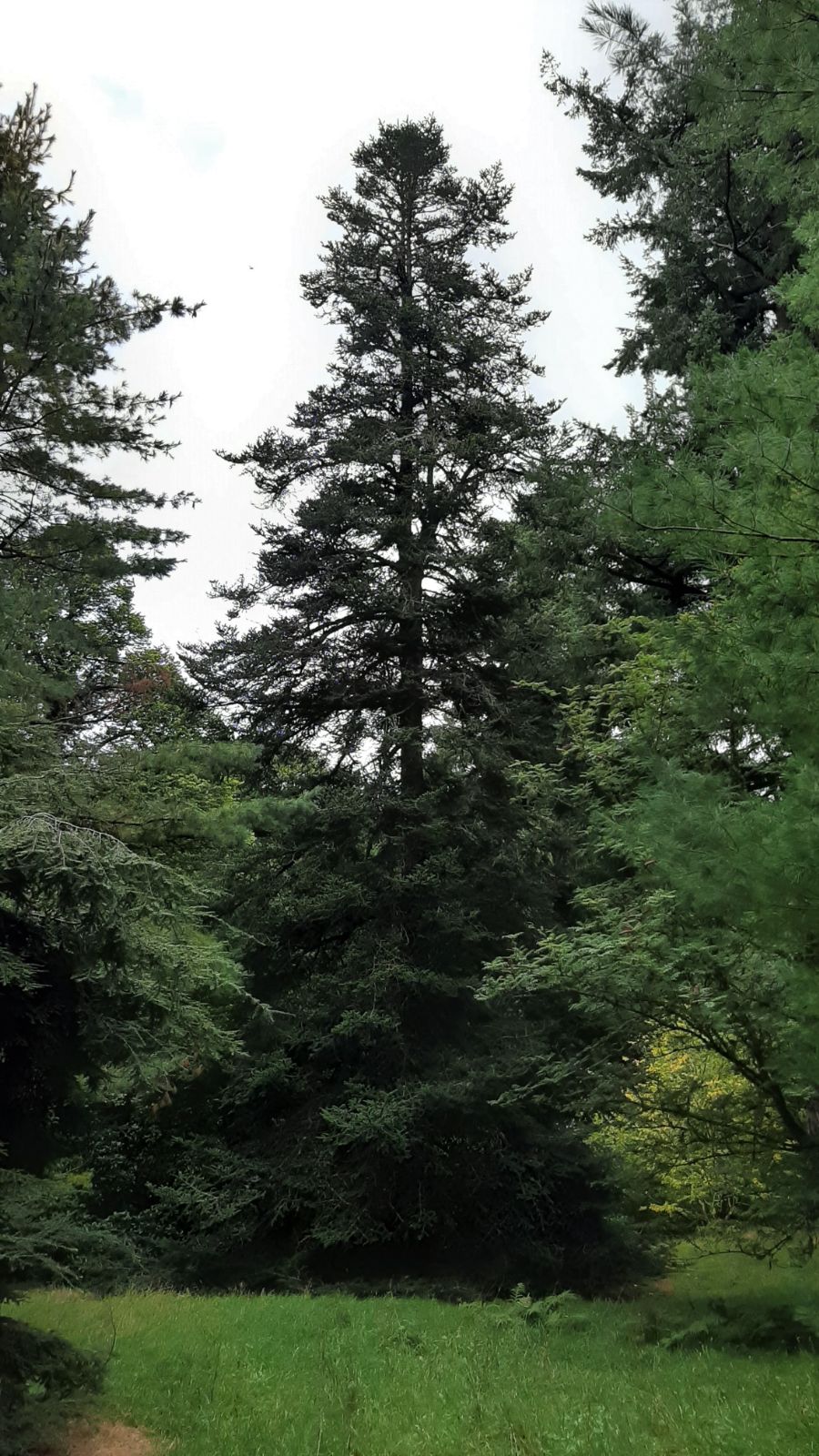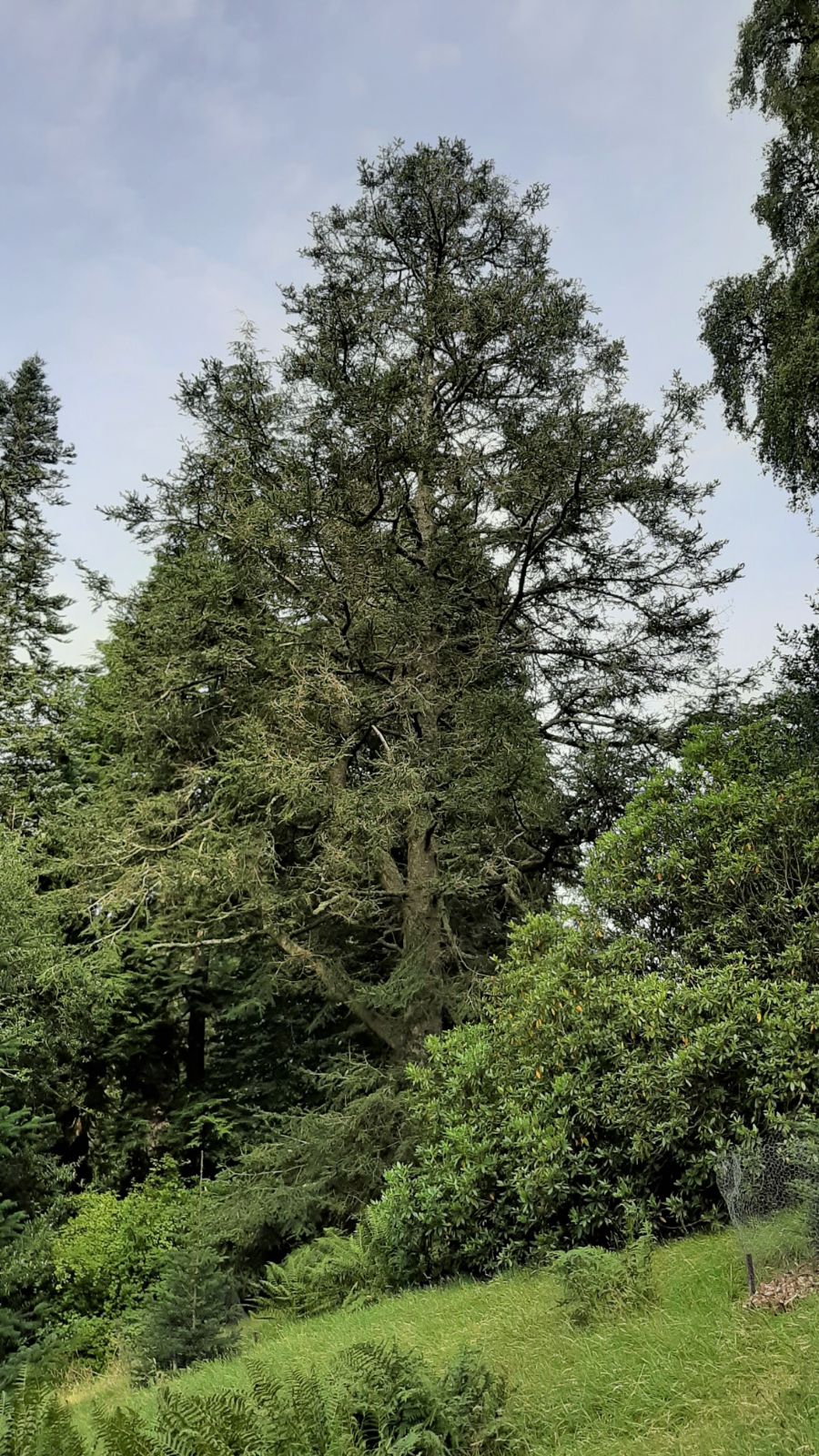Abies fabri
Sponsor
Kindly sponsored by
Sir Henry Angest
Credits
Tom Christian (2021)
Recommended citation
Christian, T. (2021), 'Abies fabri' from the website Trees and Shrubs Online (treesandshrubsonline.
Genus
Common Names
- Faber Fir
- Emei Lengshan
Synonyms
- Abies delavayi var. fabri (Mast.) D.R. Hunt
- Keteleeria fabri Mast.
Infraspecifics
Other taxa in genus
- Abies alba
- Abies amabilis
- Abies × arnoldiana
- Abies balsamea
- Abies beshanzuensis
- Abies borisii-regis
- Abies bracteata
- Abies cephalonica
- Abies × chengii
- Abies chensiensis
- Abies cilicica
- Abies colimensis
- Abies concolor
- Abies delavayi
- Abies densa
- Abies durangensis
- Abies ernestii
- Abies fanjingshanensis
- Abies fansipanensis
- Abies fargesii
- Abies ferreana
- Abies firma
- Abies flinckii
- Abies fordei
- Abies forrestii
- Abies forrestii agg. × homolepis
- Abies fraseri
- Abies gamblei
- Abies georgei
- Abies gracilis
- Abies grandis
- Abies guatemalensis
- Abies hickelii
- Abies holophylla
- Abies homolepis
- Abies in Mexico and Mesoamerica
- Abies in the Sino-Himalaya
- Abies × insignis
- Abies kawakamii
- Abies koreana
- Abies koreana Hybrids
- Abies lasiocarpa
- Abies magnifica
- Abies mariesii
- Abies nebrodensis
- Abies nephrolepis
- Abies nordmanniana
- Abies nukiangensis
- Abies numidica
- Abies pindrow
- Abies pinsapo
- Abies procera
- Abies recurvata
- Abies religiosa
- Abies sachalinensis
- Abies salouenensis
- Abies sibirica
- Abies spectabilis
- Abies squamata
- Abies × umbellata
- Abies veitchii
- Abies vejarii
- Abies × vilmorinii
- Abies yuanbaoshanensis
- Abies ziyuanensis
Trees to 40 m × 1–1.5 m dbh. Crown pyramidal in youth, broad-pyramidal or columnar and often flat-topped in old trees. Bark of young trees smooth, grey, with prominent resin blisters; becoming deeply fissured and brownish-grey with age, developing long, narrow, angular plates. First order branches long, spreading horizontally; second order branches spreading, assurgent. Branchlets slender, stiff, somewhat glossy, maturing from ivory or yellowish- or fawn-brown to yellowish-grey to grey-brown, ridged and grooved, glabrous or with a sparse dark pubescence in grooves. Vegetative buds ovoid-conical, small, resinous. Leaves pectinate (strongly so below shoots) those of the upper ranks often weakly assurgent, directed forward, somewhat more radial on coning shoots; 1.3–3 cm × 2–2.5 mm, base twisted, margins weakly recurved, apex emarginate, dark green above, with two white stomatal bands below. Pollen cones 2–3.5 cm long. Seed cones short-pedunculate, barrel-shaped, apex obtuse or rarely umbilicate, (5–)6–11 × 3–5 cm, purplish-blue at first, maturing through dark indigo to brownish blue; seed scales flabellate-trapeziform, 1.4–2 × 1.6–2.4 cm at midcone; bracts cuneate-obovate or oblong-spathulate, broadly rounded at the apex, with only the cusps exserted and recurved or reflexed at maturity. Rachis fusiform, purplish-brown. (Farjon 2017; Debreczy & Rácz 2011; Fu et al. 1999).
Distribution China West Sichuan
Habitat Temperate forest at 1500–4000 m asl, in near-pure stands in the type locality on Mt. Emei, elsewhere associated with Pinus tabuliformis and Tsuga chinensis.
USDA Hardiness Zone 7-8
RHS Hardiness Rating H5
Conservation status Vulnerable (VU)
Taxonomic note Shao et al. (2020) investigated species delimitation within the A. delavayi complex and found A. fabri to be fall within a broad interpretation of A. delavayi. However, all living material of A. fabri (including subsp. minensis) studied during research for this revision for Trees and Shrubs Online supports maintaining it as a distinct species. A. fabri s.l. can be amply distinguished from all known members of the A. delavayi complex by its needle margins (slightly recurved cf. conspicuously revolute); by its leaf arrangement (pectinate cf. radial), and by its shoots (ivory- or yellowish- or fawn-brown cf. reddish-brown or maroon, or occasionally purplish-brown) (Farjon 2017; Debreczy & Rácz 2011; Rushforth 1984).
First collected in 1887 by the German missionary Ernst Faber on Emei Shan in Sichuan, the fir which would bear his name was originally described, as a species of Keteleeria, in 1902. Its proper placement within Abies would only be formally published some years later, in 1920. By then another Ernest, Wilson this time, had followed in Faber’s footsteps, botanising the slopes of Emei Shan and its sister mountain Wa Shan in 1903 and again in 1910, introducing seed on both occasions (Bean 1976).
Emei Shan has become rightly famous as one of the botanical treasure houses of China. Its five major vegetation zones provide appropriate habitat for over 3,000 species of vascular plants. This has led to the mountain being recognised as a World Heritage Site, and an immensely popular destination for tourists and botanists alike (Lancaster 2008). Its sister mountain, Wa Shan, some 35 km to the south west, has been demonstrated to be equally rich, perhaps even richer, but it is often overlooked in favour of its more famous neighbour (Callaghan 2011). Roy Lancaster paints a vivid picture of meeting Faber Fir in its type locality on Emei Shan in his book A Plantsman’s Paradise: Travels in China (Lancaster 2008) and it is interesting to note that while A. fabri (subsp. fabri) has a relatively narrow distribution centred here on Emei Shan and neighbouring peaks, its subsp. minensis may be more widespread. There are areas of overlap, such as Zheduo Shan and Wenchuan where intermediate forms are known to occur (Rushforth 1986) but most cultivated material is easily assigned to one subspecies or the other. Material of Zheduo Shan origin includes W 4078, which is still in cultivation.
At the time of its introduction to cultivation Faber Fir was considered at best a mere variety of A. delavayi, and at times has been treated as synonymous with that species. Consequently, many trees in collections were not distinguished at one time or another, and Faber Fir’s reception and early performance in cultivation is thus poorly documented. It has been collected more recently, for example under SICH 604 in 1991 and young trees from this gathering have grown well in UK collections. In common with nearly all the Sino-Himalayan Firs it is at its best in a cool-temperate maritime climate with abundant precipitation, but it is interesting to note that Faber Fir, and in particular trees of SICH 604, have coped better than most of the other Sino-Himalayan Abies with the increasingly hot and dry summers in the south east of England, for example at Bedgebury National Pinetum in Kent. The same collection is undeniably better at Howick Hall in Northumberland and at Dawyck Botanic Garden in the Scottish Borders (pers. obs. 2020) but even in such rich collections as these it remains rare compared to several other Chinese species, especially A. forrestii and its allies.
Original trees persist here and there, including an example of W 4078 at the Royal Botanic Garden Edinburgh. Two grafts from this tree were planted at Dawyck Botanic Garden in 1992, but for several years now all three have been erroneously labelled A. forrestii (pers. obs. 2009–2020). A. fabri and A. forrestii (sensu-stricto) can be confused due to some overlapping characters, especially their largely glabrous shoots and the similar morphologies of their mature seed cones, but they can be distinguished by their different shoot colours (yellowish or pinkish-brown with faint ridges in fabri cf. maroon- or reddish-brown and smooth in forrestii), the vegetative buds (small ovoid-conical cf. globular-ovoid and potentially large), and the needle margins (slightly recurved cf. completely flat).
subsp. minensis (Bordères & Gaussen) Rushforth
Common Names
Min Fir
Synonyms
Abies minensis Bordères & Gaussen
Differing from the type in: shoots honey- or fawn-brown (cf. yellow-brown) often with a very fine, pale, scattered pubesence; longer leaves up to 4 cm (cf. to 2.5 cm); leaves with flatter margins (cf. somewhat recurved); stomatal bands greenish-white (cf. glaucous-silver). (Rushforth 1986).
Distribution
- China – north central Sichuan
RHS Hardiness Rating: H7
USDA Hardiness Zone: 5-7
The Min Fir is something of an enigma. It is largely overlooked both in gardens and in the wild, and its taxonomic position remains subject to debate. Bordères-Rey & Gaussen described it in 1929 based on T.T. Yu’s collection Yu 2586, collected near Songpan in northern Sichuan, but several authorities have regarded it as synonymous with A. fargesii var. faxoniana (or A. faxoniana) including Dallimore & Jackson (1966), Liu (1971), as well as the authors of the Flora of China account (Fu, Li & Mill 1999).
Rushforth (1986) considered it distinct from that taxon, but referable to A. fabri and so he classified it as a subspecies, A. fabri subsp. minensis, a stance since adopted by Farjon (1990; 2017). In a series of papers published in Notes from the Royal Botanic Garden Edinburgh Rushforth clarified the taxonomic position of several of the Chinese Firs (Rushforth 1984a; 1984b; 1986); in the same paper in which he dealt with the Min Fir, Rushforth demonstrated that the collections of A. faxoniana cited in that taxon’s original protologue actually represent two entities: the type (W 4060) is clearly referable to the A. fargesii complex; but three paratypes (W 4052, 4069, and 4070) are referred to A. fabri subsp. minensis (Rushforth 1986). The confusion caused by these paratypes is the reason why several authorities to continue to place A. fabri subsp. minensis into synonymy with A. fargesii var. faxoniana.
As discussed in the A. fargesii article that species has a large distribution through the mountains of western and north-central China, and, inevitably, it exhibits considerable variation across this large range. Notwithstanding that variation, Rushforth (1986) observes that A. fabri subsp. minensis consistently differs from A. fargesii (s.l. but especially var. faxoniana) in several characters, notably ‘in the less densely pubescent shoots, which are honey or fawn-brown in colour (cf. purple or red-brown), […the more pectinate leaf arrangement of the longer leaves…], the ovoid buds (cf. conical) and the cones with generally reflexed, shortly exserted bract scales (cf. erect and somewhat more exserted)’ (Rushforth 1986).
Well over thirty years later, and taking into account new introductions made in the intervening period, it remains the case that trees fitting A. fabri subsp. minensis are easily distinguished from those that are clearly referable to the A. fargesii complex, and on that basis it seems sensible to continue to treat it as a distinct entity. The most immediately diagnostic difference is the shoot colour, then the vegetative buds. Both the pubescence and pectinate foliage arrangement are useful, but really need to be seen in the context of variation to be fully appreciated. Additionally, a young tree of subsp. minensis growing at Benmore Botanic Garden in Scotland, a graft from an older plant of W 4052 and c. 30 years old when seen in 2020, had smooth bark. Trees of similar age belonging to the fargesii complex should have distinctly flaky bark.
When Rushforth reduced the Min Fir to a subspecies of A. fabri he observed that it is ‘quite distinct from subsp. fabri at the two extremes – particularly as exhibited in cultivated minensis from Wilson 4069 and fabri from the Emei Shan type locality. However, many of the other specimens are less easily assigned; for example, those from the Zheduo Shan and Wenchuan areas, where both taxa appear to occur in the same or adjoining forests’ (Rushforth 1986). In 2020 it remains the case that both subspecies are best represented in cultivation from their two extremes, but as ever some caution should be employed when scrutinising material. New collections of subsp. fabri such as SICH 604 are remarkable in their uniformly short needles, and quite distinct from those historic collections of subsp. minensis still represented by living material, such as W 4052 and W 4069 (pers. obs.). The 4052 is represented in several collections including Benmore Botanic Garden in Argyll (a graft from an original tree). The 4069 is more widespread; it grows, for example, at Durris in Aberdeenshire, where a tree was 22 m × 0.67 m dbh in 2018. Another, at Burnside in Angus, planted 1936, was 25 m × 0.67 m dbh in the same year and is the tallest extant tree on record in the UK and Ireland. Most notable specimens seem to be in Scotland, but there are several sizeable trees in Gloucestershire, too (Tree Register 2020).
Several trees fitting Min Fir are labelled A. fargesii or its var. faxoniana, such as at least two at Dawyck Botanic Garden in Scotland. That there are similarities between Min Fir and long-leaved forms of A. fargesii (s.l.) is undeniable, but the Min Fir can generally be distinguished by virtue of the characters given in the quote from Rushforth’s (1986) paper, above. The more recent collection of H&M 2190, collected as A. fabri near Lake Mugecho in Sichuan, may belong here.

